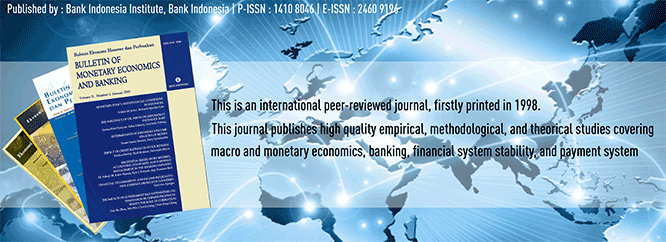
Document Type
Article
Abstract
The goal of this paper is to analyze the determinants of bank credit declining, whether is dominated by the supply or the credit demand, post the financial crisis in Indonesia. This paper is a sort of New Keynesian approach, which pre assume the imperfectness of the credit market and hence create disequilibrium.Using the switching regression model and Maximum Likelihood Estimation to determine the probability of supply or demand determination, the result shows the existence of excess demand of credit during the crisis period, 1997/ 1998, confirming the credit crunch situation. After the crisis, the condition is reversed, where the credit supply is higher than the credit demand. The two findings implicitely shows the inflexibility of interest rate to equalize the credit market.JEL: D43, D82, E44, E51Keywords : Disintermediasi, kredit, disequilibrium, maximum likelihood, persamaan simultan, switching regression
Recommended Citation
Harmanta, Harmanta and Ekananda, Dr. Mahyus
(2005)
"DISINTERMEDIASI FUNGSI PERBANKAN DI INDONESIA PASCA KRISIS 1997 : Faktor Permintaan Atau Penawaran Kredit, Sebuah Pendekatan Dengan Model Disequilibrium,"
Bulletin of Monetary Economics and Banking: Vol. 8:
No.
1, Article 3.
DOI: https://doi.org/10.21098/bemp.v8i1.128
Available at:
https://bulletin.bmeb-bi.org/bmeb/vol8/iss1/3
First Page
51
Last Page
78
Creative Commons License

This work is licensed under a Creative Commons Attribution-NonCommercial 4.0 International License
Country
Indonesia
Affiliation
Bank Indonesia







